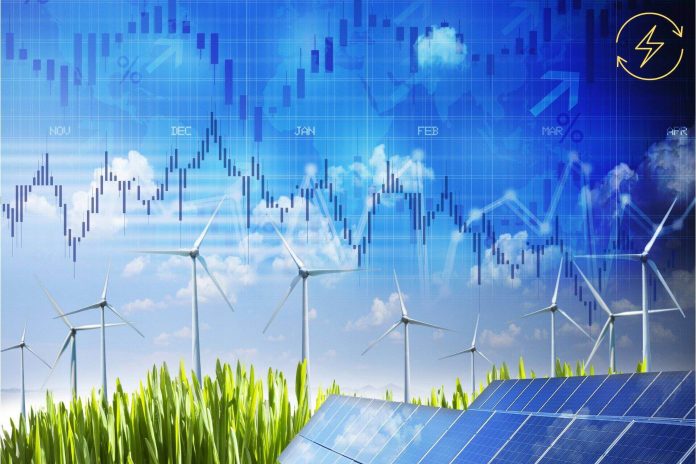Recognizing the interest in information about the dynamics of electricity production and consumption, especially from renewable sources in Croatia and Europe, and their importance in combating climate change, RESC publishes a monthly report on domestic electricity trends. We remain committed to analyzing statistical data to gain a better and more precise understanding of our system’s needs. The expertise provided in our reports can benefit those seeking the information as well as stakeholders in the sector who can use the published data and analyses for future electricity system planning.
All indicators from previous reports have pointed to good hydrology and high hydroelectric production in the first half of this year. The positive results from the first three months of this year continued into April. Thanks to significant hydro and wind power production, Croatia, like in March, was expected to export electricity surpluses for almost the entire month. In April, we exported approximately 106 GWh of electricity. However, there were periods when it was necessary to import electricity, especially when wind power plants were not generating much energy. The Krško nuclear power plant operated at full capacity in April, exceeding its nominal output. Throughout April, the system had sufficient flexibility resources for system services and balancing services on the production side, with a portion being achieved through interconnections for system balancing. There was slightly less physical transit of electricity through the HOPS high-voltage network to neighboring control areas compared to the previous three months.
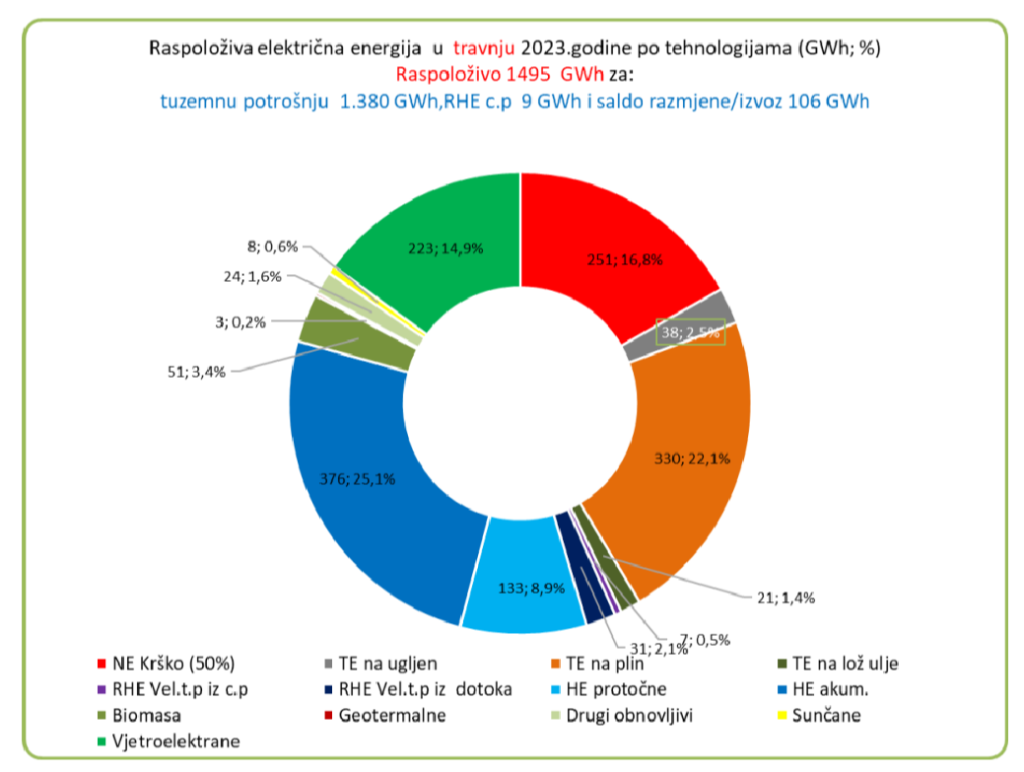
In April, Croatia had 1495 GWh of electricity available. We consumed 1380 GWh, and we exported 106 GWh surplus. Wind power plants generated 223 GWh of electricity, accounting for nearly 15% of the total energy mix. As can be seen from this data, hydroelectric power plants remain the largest producers of electricity from renewable sources. Solar power plants generated 8 GWh of electricity in April, accounting for 0.6%, while other renewable energy sources produced 78 GWh of electricity.
The total production of wind power plants in April amounted to 223,024 MWh, with a capacity factor of 31.6% (higher than the average for this month).
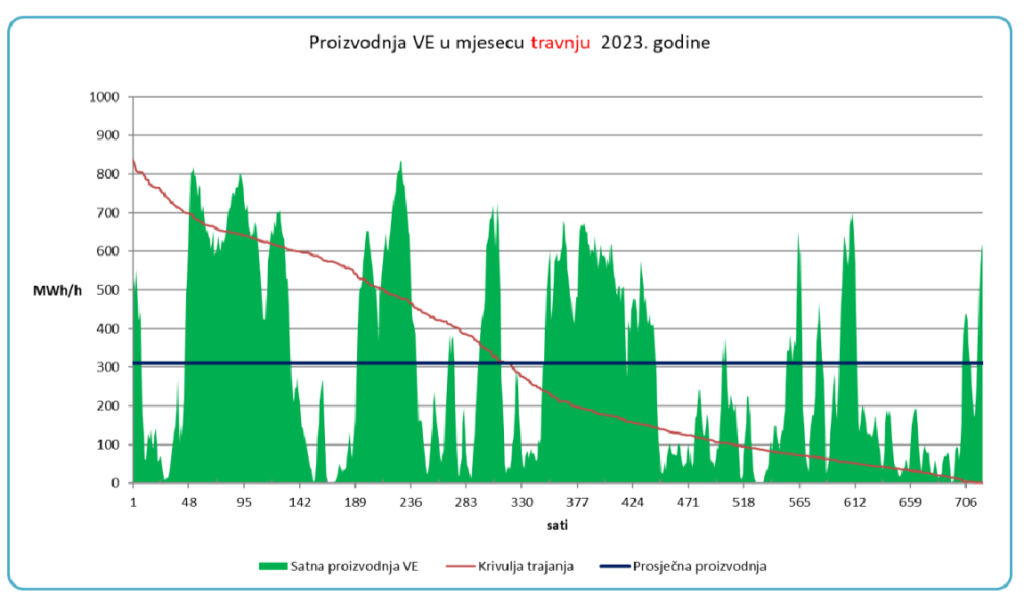
The average hourly production of wind power plants in April was 309.8 MWh/h, with a maximum of 836 MWh/h. The maximum capacity factor reached 85.2%. The maximum hourly production change for wind power plants in April was an increase of 177 MWh/h and a decrease of 227 MWh/h.
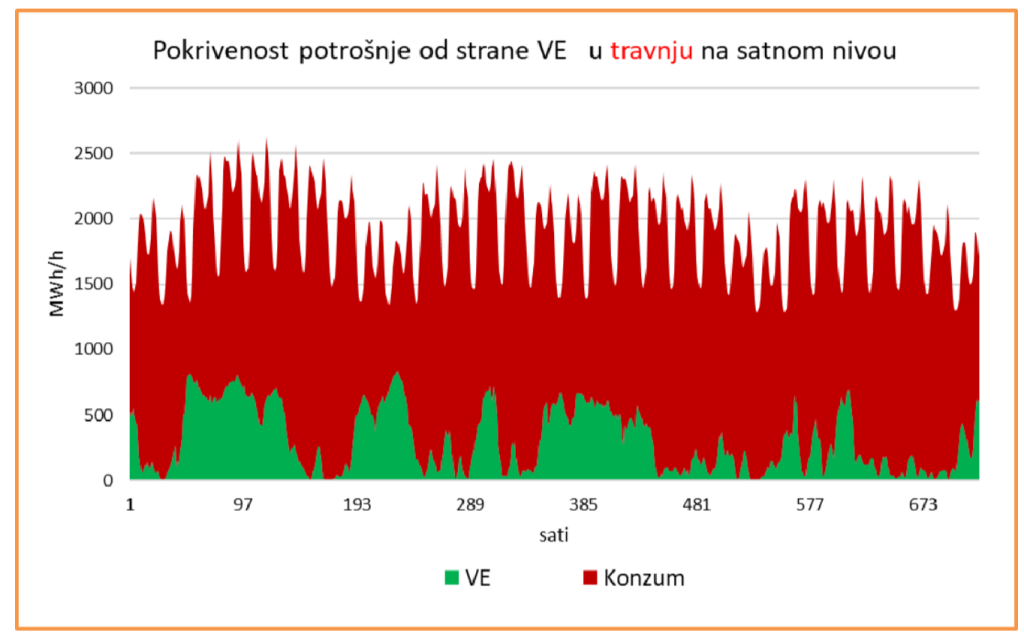
Electricity trends in the first four months of 2023:
The total electricity turnover in the Croatian power system for the first four months of this year was 8,764 GWh, of which available energy, or demand, was 6,876 GWh, while transit amounted to 1,888 GWh or 21.5% of the total turnover.
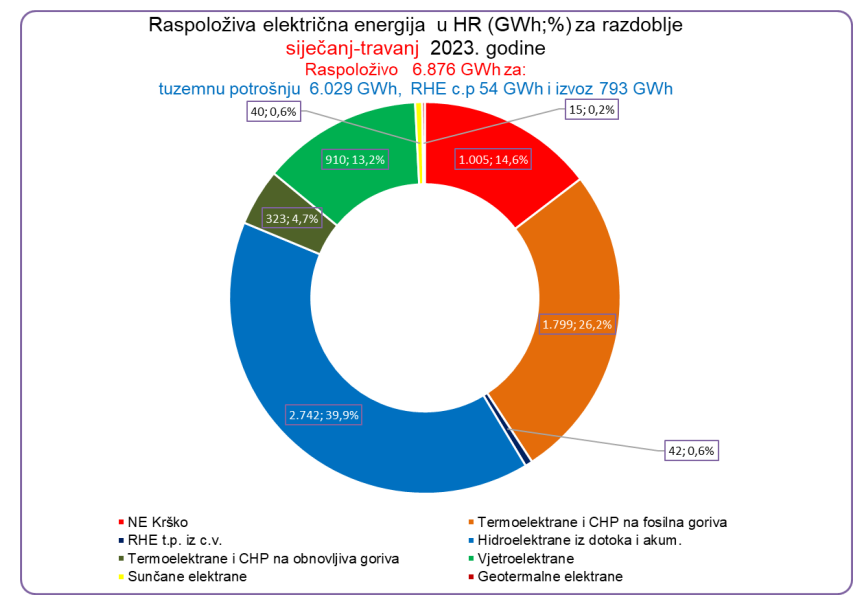
From January to April 2023, the total electricity production at power plants in Croatia amounted to 5,871 GWh, of which non-renewable sources accounted for 1,841 GWh (31.4%) and renewable sources for 4,030 GWh (68.6%). The total electricity consumption was 6,083 GWh, of which domestic consumption was 6,029 GWh, and consumption for pumping in hydropower plants was 54 GWh. The production of the Krško nuclear power plant (50%) reached 1,005 GWh, operating at full capacity, exceeding the nominal capacity by 0.1%.
Since the available energy exceeded consumption by 793 GWh, these surpluses were exported to foreign markets.
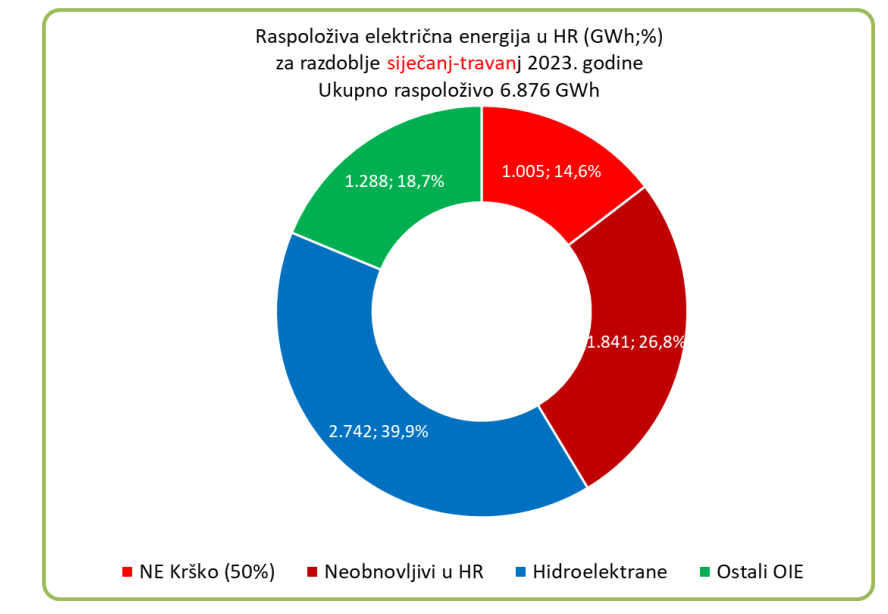
Renewable sources accounted for 58.6% (hydroelectric plants 39.9%, other renewables 18.7%) of the available energy in the first three months, while non-renewable sources accounted for 26.8%, and the Krško Nuclear Power Plant (50%) accounted for 14.6%.
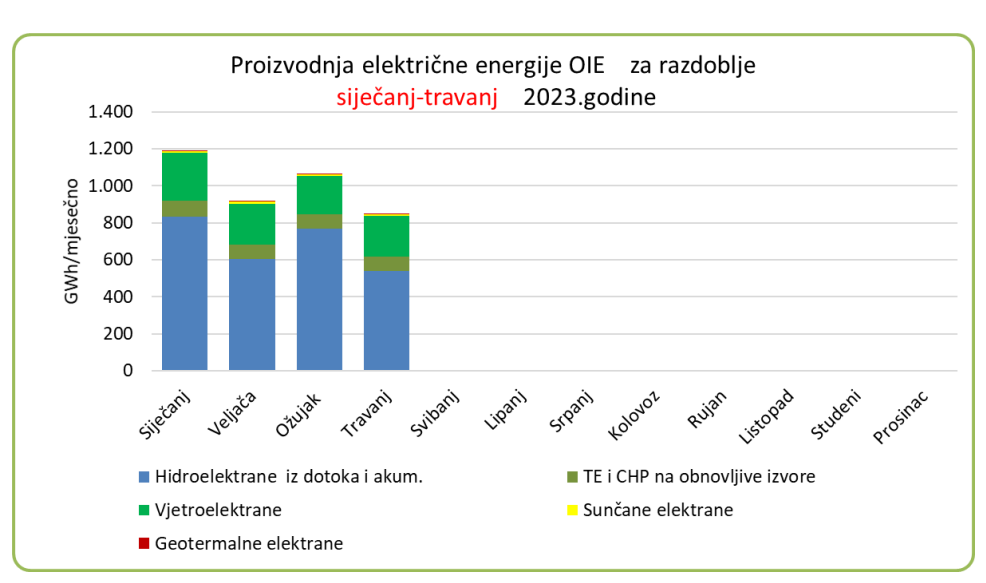
There was no net import in the exchange balance with foreign countries, and 793 GWh was exported. It is expected that other renewable energy sources will surpass 20% of the available energy this year.
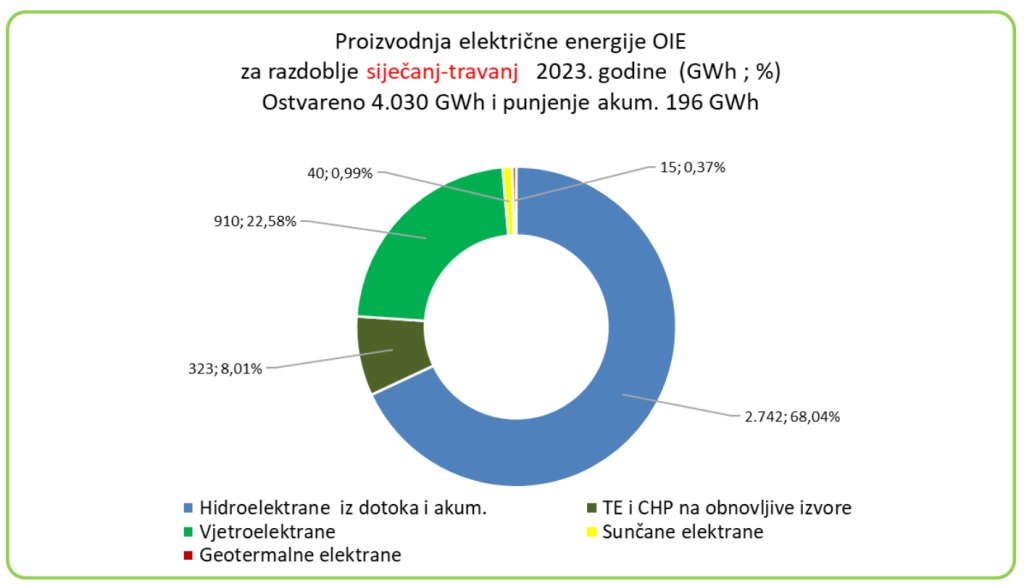
As evident, hydroenergy is the dominant producer of electricity from renewable sources. When analyzing only renewable energy producers, hydroelectric plants account for a share of 68.04%, while wind energy accounts for 22.58%.
In the first four months of this year, favorable energy indicators were achieved compared to the same period last year, which will have positive economic effects on energy stakeholders, primarily HEP (Croatian Electric Power Company).
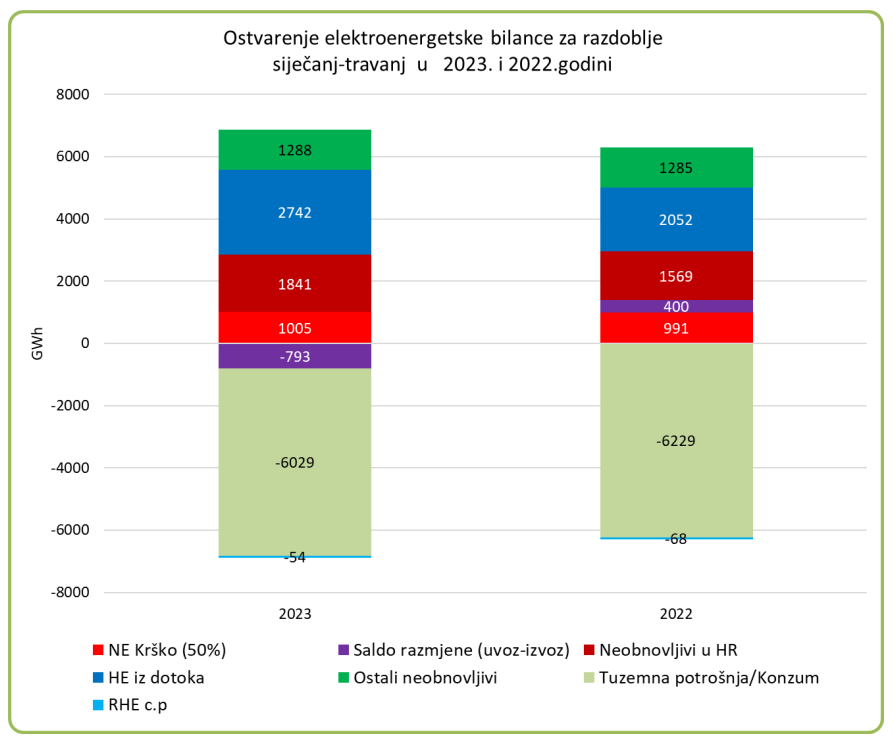
The Krško Nuclear Power Plant (50%) produced over 14 GWh. Renewable energy production during the observed period was higher by 693 GWh, with hydroelectric plants contributing an increase of 690 GWh from water inflow and accumulations, wind farms contributing 4 GWh, and solar power plants contributing 18 GWh. However, other renewable energy production during the same period was lower by 19 GWh. The content of accumulations increased by 196 GWh compared to the beginning of the year, which is 344 GWh better than the same period last year. The transit of electricity through the transmission network was lower by 481 GWh.
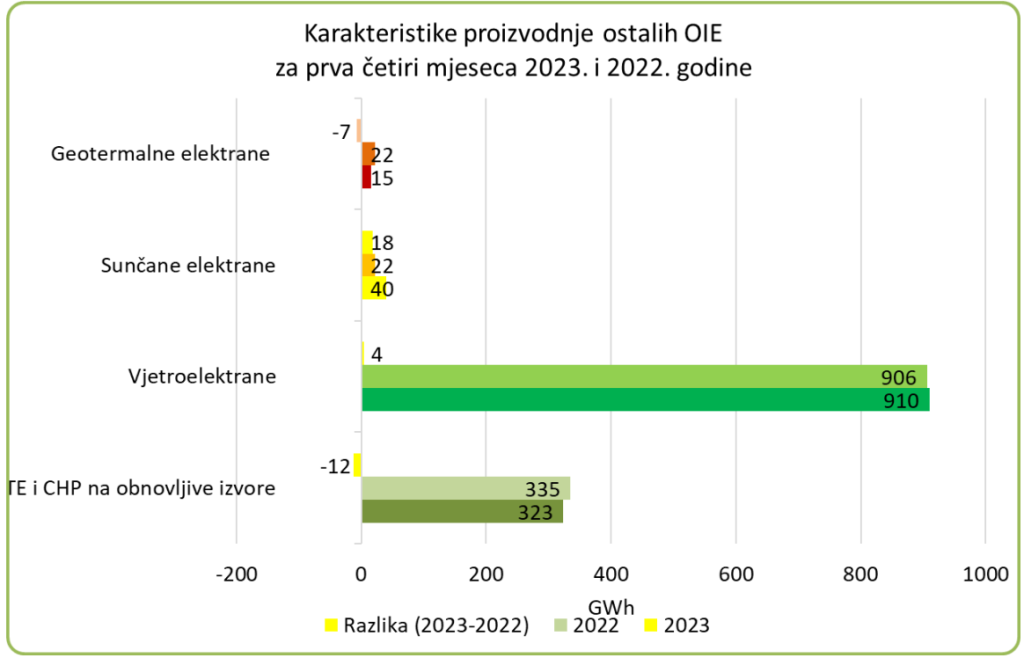
When analyzing the production of renewable energy sources in the first four months of last year and this year, there is a significant increase in solar power production due to the commissioning of new production capacities, while the production of biomass and biogas power plants slightly decreased.
Electricity price trends
The average hourly electricity price in April this year was €106.00/MWh, compared to €192.50/MWh in April last year, which represents a decrease of €86.50/MWh or 44.94%.
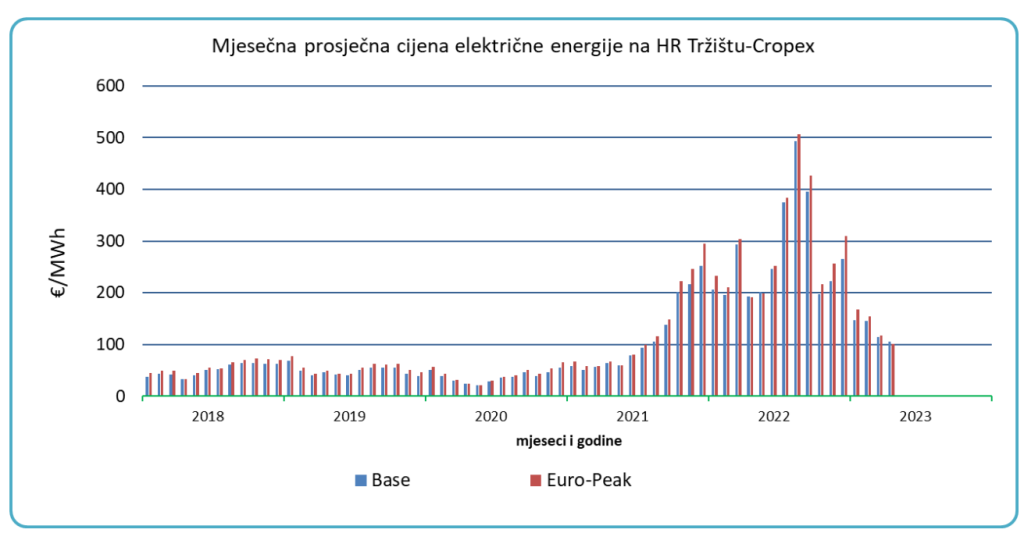
The average hourly price for the first four months of this year was €127.94/MWh, compared to €222.06/MWh for the same period last year, indicating a decrease of €94.12/MWh or 42.38%. During April, electricity prices on the Western European exchanges averaged around €100/MWh, with a downward trend, significantly lower compared to the same month last year. Gas prices are also considerably lower, averaging around €101.13/MWh in the first four months of last year, compared to €50.44/MWh in the same period this year, representing a 50% decrease.
Electricity and gas prices on the European market are moving in a positive direction, which, coupled with the integration of new renewable energy sources into our system and favorable hydrology, can lead to a very favorable economic situation in the country.
This report was prepared using publicly available data from HEP, HOPS, HROTE, CROPEX, Krško Nuclear Power Plant, ENTSO, DZS, RTE France, RED Electrica, World Data, IEA, EEX, EPEX, and IRENA.


